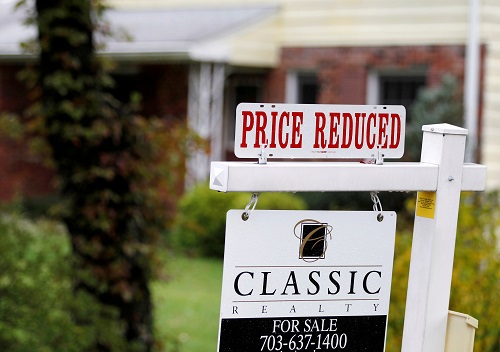U.S. home sales tumble amid cold weather, tight supply

Follow us Now on Telegram ! Get daily 10 - 12 important updates on Business, Finance and Investment. Join our Telegram Channel
WASHINGTON - U.S. home sales dropped to a six-month low in February amid cold weather in many parts of the country and record low supply, and a rebound could be muted by rising mortgage rates as well as higher house prices.
Still, the report from the National Association of Realtors on Monday showed robust demand, with houses only staying on the market for a record-low 20 days after being listed.
"We think severe winter weather depressed sales in February," said Daniel Silver, an economist at JPMorgan in New York. "Existing home sales also are cooling off following a robust run due to some other factors apart from the weather."
Existing home sales dropped 6.6% to a seasonally adjusted annual rate of 6.22 million units last month, the lowest level since last August. Sales declined in the Northeast, South and the Midwest, but rose in the West.
Economists polled by Reuters had forecast sales would drop 3.0% to a rate of 6.50 million units in February. Home resales, which account for the bulk of U.S. home sales, increased 9.1% on a year-on-year basis. Activity continued to be concentrated in the upper price range of the market.
Bitterly cold weather, including severe winter storms in Texas and other parts of the densely populated South region, disrupted economic activity last month, depressing retail sales, production at factories and homebuilding.
Warmer temperatures, an acceleration in the pace of COVID-19 vaccinations and massive fiscal stimulus are expected to spur a sharp rebound in activity in March.
The housing market, however, is seen lagging after being one of the main drivers of the economic recovery as Americans sought bigger and more expensive houses for home offices and remote schooling during the pandemic.
U.S. stocks were trading higher. The dollar was steady against a basket of currencies. U.S. Treasury prices rose.
AFFORDABILITY ERODING
Home resales have been running ahead of contracts. The 30-year fixed-rate mortgage has risen to a nine-month high of 3.09%, according to data from mortgage finance agency Freddie Mac. Though mortgage rates remain historically low, the sustained increase since February is contributing to making homeownership more expensive for first-time buyers.
Mortgage rates have risen in tandem with U.S. Treasury yields, which have spiked in anticipation of stronger economic growth this year and higher inflation.
The median existing house price jumped 15.8% from a year ago to $313,000 in February. Prices are being squeezed higher by an acute shortage of homes available for sale.
There were 1.03 million previously owned homes on the market in February, matching January's all-time low. Supply plunged a record 29.5% from one year ago.
"Housing affordability will erode in the near-term, particularly for first-time homebuyers, due to the recent run-up in house prices and increasing mortgage rates," said Abbey Omodunbi, an economist at PNC Financial in Pittsburgh, Pennsylvania. "Excellent household balance sheets and an improving labor market will continue to support the demand for housing while weak supply conditions will remain in 2021."
Builders are being constrained by record lumber prices as well as shortages of land and labor. At February's sales pace, it would take two months to exhaust the current inventory, an all-time low and down from 3.1 months a year ago.
A six-to-seven-month supply is viewed as a healthy balance between supply and demand.
Last month, houses for sale typically stayed on the market for only 20 days, down from 21 days in January and 36 days in February 2020. Seventy-four percent of homes sold in August were on the market for less than a month.
According to the NAR, realtors were reporting multiple bids for houses on the market. First-time buyers accounted for 31% of sales in February, down from 33% in January and from 32% in February 2020. All-cash sales accounted for 22% of transactions.
























